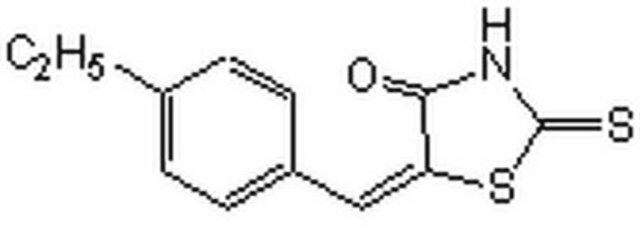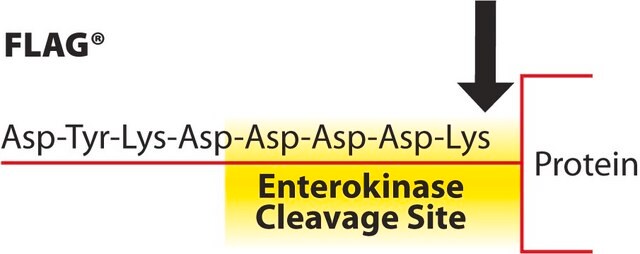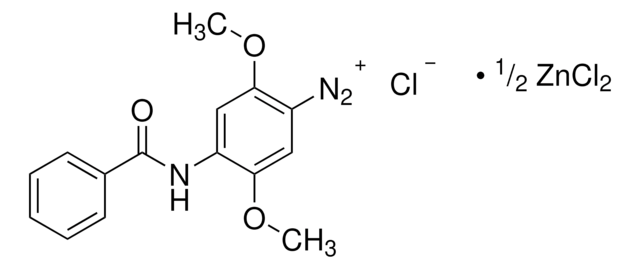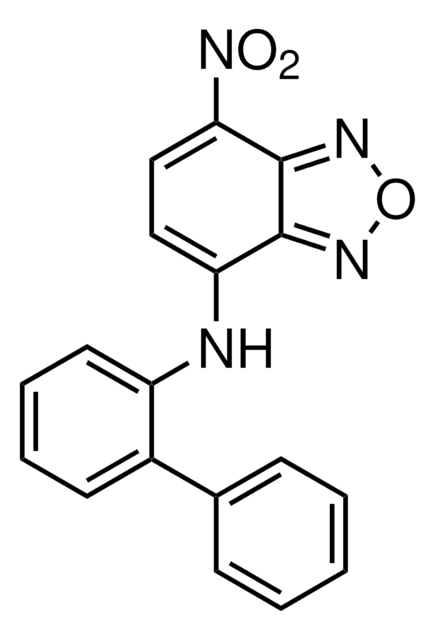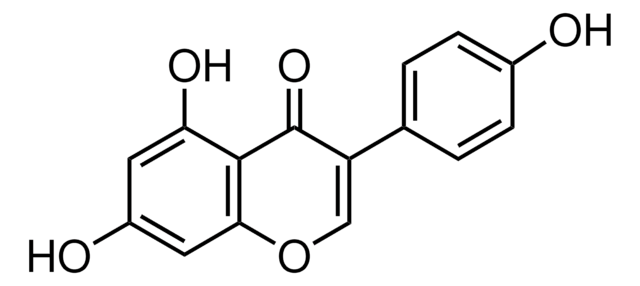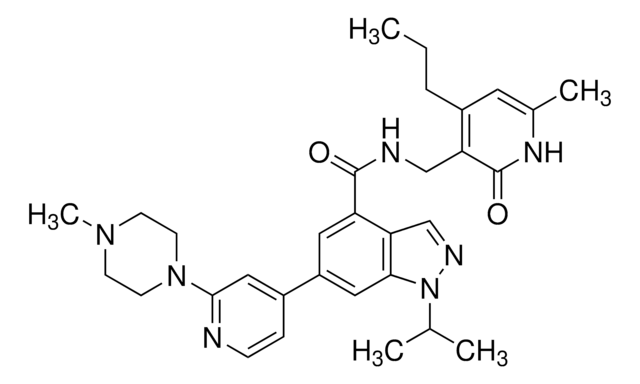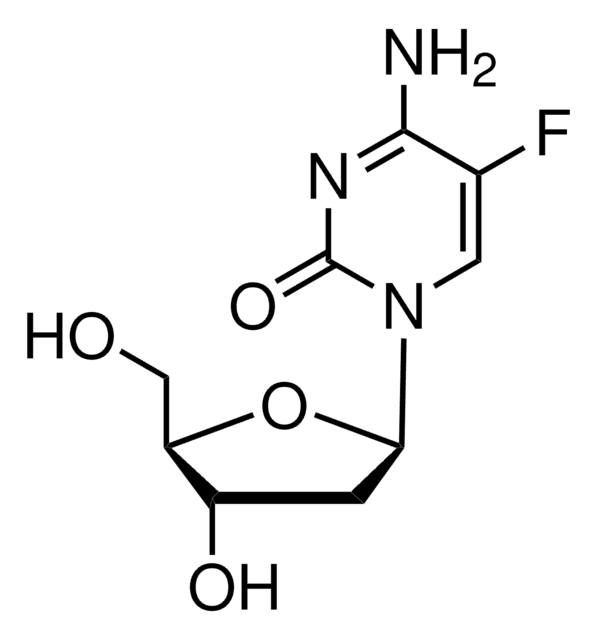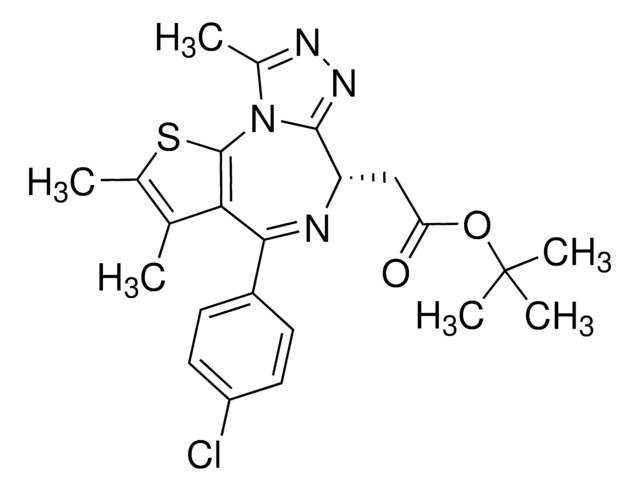F3680
10058-F4
≥98% (HPLC), solid
Sinónimos:
5-[(4-Ethylphenyl)methylene]-2-thioxo-4-thiazolidinone
About This Item
Productos recomendados
Quality Level
assay
≥98% (HPLC)
form
solid
color
yellow
solubility
DMSO: >10 mg/mL
H2O: <2 mg/mL
storage temp.
2-8°C
SMILES string
CCc1ccc(cc1)\C=C2\SC(=S)NC2=O
InChI
1S/C12H11NOS2/c1-2-8-3-5-9(6-4-8)7-10-11(14)13-12(15)16-10/h3-7H,2H2,1H3,(H,13,14,15)/b10-7+
InChI key
SVXDHPADAXBMFB-JXMROGBWSA-N
Application
- as c-Myc inhibitor to treat stromal cells
- as c-Myc inhibitor to determine the effect of c-Myc inhibition on cardiac progenitor cells (CPC) growth
- as c-Myc inhibitor to culture T cells
- to treat C4-2 cells to examine the activity of MST1 promoter luciferase reporter construct
Biochem/physiol Actions
Features and Benefits
signalword
Warning
hcodes
Hazard Classifications
Eye Irrit. 2 - Skin Sens. 1
Storage Class
11 - Combustible Solids
wgk_germany
WGK 3
flash_point_f
Not applicable
flash_point_c
Not applicable
ppe
dust mask type N95 (US), Eyeshields, Faceshields, Gloves
Certificados de análisis (COA)
Busque Certificados de análisis (COA) introduciendo el número de lote del producto. Los números de lote se encuentran en la etiqueta del producto después de las palabras «Lot» o «Batch»
¿Ya tiene este producto?
Encuentre la documentación para los productos que ha comprado recientemente en la Biblioteca de documentos.
Los clientes también vieron
Artículos
We present an article about how proliferating cells require the biosynthesis of structural components for biomass production and for genomic replication.
Contenido relacionado
We offer a variety of small molecule research tools, such as transcription factor modulators, inhibitors of chromatin modifying enzymes, and agonists/antagonists for target identification and validation in gene regulation research; a selection of these research tools is shown below.
Nuestro equipo de científicos tiene experiencia en todas las áreas de investigación: Ciencias de la vida, Ciencia de los materiales, Síntesis química, Cromatografía, Analítica y muchas otras.
Póngase en contacto con el Servicio técnico